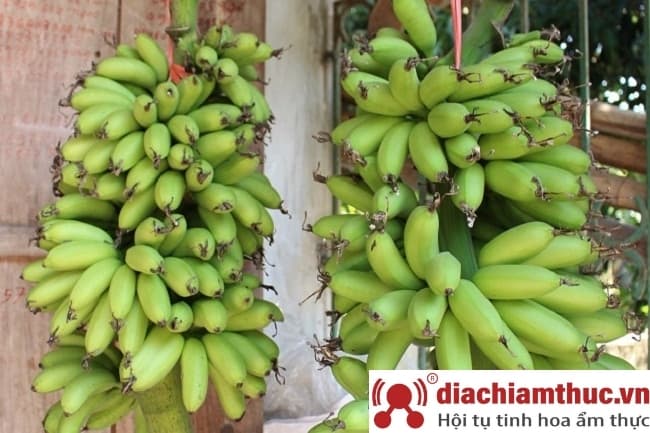Nam Dinh is a rustic countryside with 17 markets, of which Dragon market is the busiest and largest market in Nam Dinh. Dragon Market in the past was famous for silk and bananas. To this day, it’s still the same, the same famous dishes. Banana is a small, elongated fruit with a thin skin, quite fragrant, with a naturally sweet taste. Considered to be much more delicious than regular bananas. Banana season reigns in Nam Dinh, all over the Dragon market lights up bright yellow.

Dragon Market Dragon
Bananas are often sold by people in rooms, with a large number of up to a dozen or so bunches. Buyers who want to take it away should choose the part of the fruit that is still green. Close family members always bring ripe bananas to eat immediately for “hot”. A bunch of Ngu bananas that are considered delicious must have all of the following factors: shape, flavor, and color. The shape of the fruit is small, evenly tapered, the banana peel is thin, greasy, natural yellow color, mild fragrance. And the most special thing is that each banana knob still retains its long beard.

Dragon Market – Nam Dinh
The ancients used to bring bananas to pay tribute to the king and grandchildren. Today, visitors buy to enjoy, and anyone can easily buy and enjoy this delicacy. Each bunch of bananas looks like a flower spreading its wings beautifully and splendidly on the five-fruit tray presented to the ancestral altar on the anniversary of the death anniversary and Tet.
Source: Collected internet.
The North and North Central regions have a humid subtropical climate with 4 seasons: Spring, Summer, Autumn, and Winter. The Central and South Central regions have a tropical monsoon climate, the extreme South Central and Southern regions have tropical savanna characteristics. At the same time, it is directly influenced by the trade monsoon climate, which often blows in low latitudes. The South often has a tropical savanna climate, hot and humid with two seasons: dry season and rainy season (from April-May to October-November). Every year, the cold and humid winter typical of the North contrasts with the warm atmosphere of Tet and spring in the South.
The cultural identity of ethnic groups is clearly expressed in community life and in economic activities from customs, costumes to culinary styles. Below are the unique features of Vietnamese culture that you can learn about.
Cuisine is one of the factors that create differences and characteristics of each country in the world. If when mentioning sushi, people will immediately think of Japan, kimchi is associated with Korea and Thailand with famous dishes such as tomyum, mango sticky rice, then when mentioning Vietnam, visitors will certainly not You can't miss pho, banh mi, banh xeo, crab noodle soup.
Vietnam's history began from 1 to 2 thousand years BC. Over many centuries with the Ly, Tran, Le, and Nguyen dynasties, from the mid-19th century, Vietnam became a French colony. After the August Revolution, the Democratic Republic of Vietnam was born. The Battle of Dien Bien Phu in 1954 marked the end of the French in the territory, but Vietnam was divided into two countries: the Democratic Republic of Vietnam in the North and the Republic of Vietnam in the South. After the events of April 30, 1975, Vietnam was unified and from July 2, 1976, officially named the Socialist Republic of Vietnam.